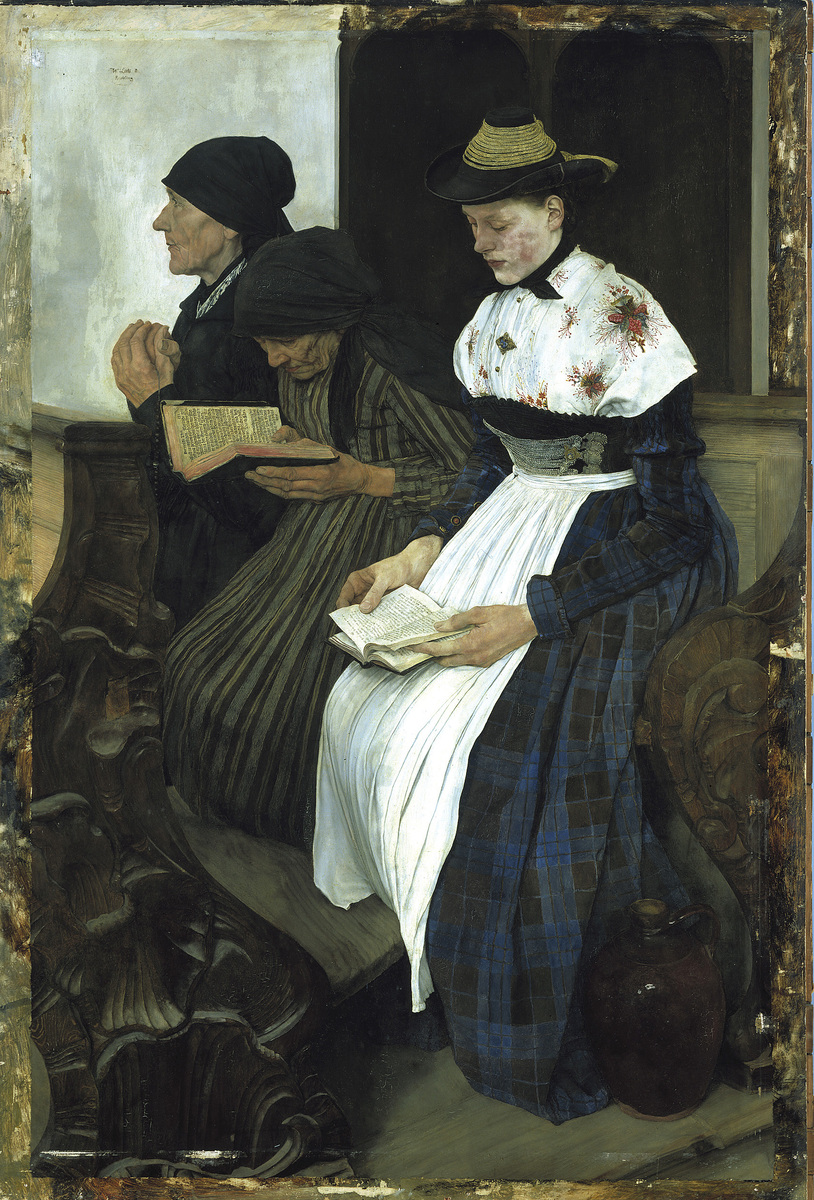Abstract
This painting by Wilhelm Leibl (1844–1900) shows the artist at the
peak of his creative talent; it is a masterpiece in terms of both
composition and execution. Painted in oil on mahogany, it is a
relatively large work (113 x 77 centimeters) that took almost three and
a half years (from October 1878 to December 1881) to complete. It was
well worth the effort, however, for it secured Leibl his reputation—at
the relatively young age of 38—as one of Germany’s greatest realists.
Leibl had already attracted some attention in 1869 and the early 1870s,
when he was painting in Munich. He left the Bavarian capital in 1873,
however, and spent the following years in the remote countryside (most
notably the Ammersee region), painting village scenes. Among his
best-known works of the period are Two
Women of Dachau in the Tavern (1874–75),
Older Farmer and Young Girl (“The Unequal
Pair”) (1876/77), and Peasants in
Conversation (1877). It was shortly after completing
Peasants in Conversation that Leibl
declared his intention to begin the central work of his life.
Leibl’s keen attention to detail and his faithful reproduction of the
local costumes in Three Women in
Church is astounding, especially—as Leibl wrote to his sister—given
the insufficient lighting in the church that was the setting.
Compositional challenges emerged as well, leaving the artist little
choice but to hope that the viewer’s knowledge of church interiors would
allow him to regard the two pews as parallel to each other. The chosen
perspective also makes the women’s hands appear too large relative to
their bodies. But, on the whole, Leibl succeeded magnificently in his
harmonious depiction of three generations of women, and his ability to
create a simple, but individual expression of piety in the facial
features of each woman deeply impressed his artist-contemporaries, not
least Vincent van Gogh. Like the earlier
Peasants in Conversation, Leibl’s
Three Women in Church suggested that
he had become a chronicler of Germany’s rural essence by adopting the
style of the Old Masters. Over time, Leibl generated a following among
painters—the “Leibl Circle”—who experimented with other modes of
realism. His work in the 1890s garnered him more disciples and admirers,
as well as prizes at international art exhibitions. Nonetheless, it was
in the Bismarckian era that Leibl made his greatest impact on German art
by deciding to paint villagers and farmers in their natural environment.
As Leibl himself put it in a letter to his mother, he had always sought
to resist the “swindle and botchery in German art” that had resulted
from the mythologizing and historicizing tendencies of imperial culture
(Götz Czymmek and Christian Lenz, eds.,
Wilhelm Leibl zum 150. Geburtstag.
Heidelberg: Edition Braus, 1994, p. 67).
